With one game left in college football's 2020 season -- or four, if you want to count New Mexico State's three spring games, which you should! -- now's the time we begin reflecting on what we saw.
This was a season of discontent and disorganization, one that asked far more than normal of its student-athletes and one that could have gone off the rails at one point or another but somehow didn't. And as we approach the finish line, I'm going to allow myself a moment of celebration. To the extent that this season was indeed worth it, here are some of the moments, players, coaches and statistics that made it so.
Favorite players (and player types)
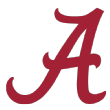
Favorite deep-ball passer: Mac Jones, Alabama. Yes, yes, having DeVonta Smith, John Metchie III and, before injury, Jaylen Waddle helps. But Jones' deep ball is gorgeous all the same. The national averages for passes 20-plus yards downfield in 2020: 36.4% completion rate, 13.4 yards per pass, 83.3 raw QBR. Jones' averages: 57.4% completion rate (27-for-47), 25.4 yards per pass, 99.9 raw QBR.
I was in the front car of the Jones bandwagon all offseason, but I still didn't expect him to be this successful.
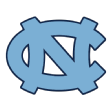
Favorite deep-ball receiver: Dyami Brown, North Carolina. It almost feels wrong to give this to a non-Bama receiver, but Brown was just ridiculous. On passes at least 20 yards downfield, he caught 12 of 28 for 543 yards and four touchdowns. He drove the Tar Heels' blowout of Miami with a 51-yarder and an 87-yarder, and he made UNC's offense as vertical as it was horizontal.
(Small sample size winner: Arkansas State's Jeff Foreman. He caught six of nine deep balls for an incredible 334 yards. He should have gone deep more, apparently.)

Favorite running QB: Malik Willis, Liberty. The Auburn transfer had a lovely season overall, throwing for 2,260 yards and leading Hugh Freeze's Flames to within one point of an unbeaten record. But his legs were magical. Filtering out sacks, he rushed 12.2 times per game at 8.7 yards per carry. Over 40% of his rushes moved the chains (56% on third down, 86% on fourth), and basically one in nine finished in the end zone.
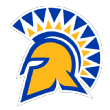
Favorite angry runner: Tyler Nevens, San Jose State. It wasn't just that he averaged 7.8 yards per carry in 2020 -- it's that he did so with only minimal help from his offensive line. He averaged just 1.2 yards per carry before contact ... and 6.6 after contact!
Running Back Tyler Nevens in the last 2 games📈
— San José State Football 🏆 (@SanJoseStateFB) December 14, 2020
💥 336 yards
💥 3 TDs
💥 TWELVE yards per carry@tynevens23 | #SpartanUp
pic.twitter.com/7MwlChQ7ft
Every other back who averaged at least seven yards per carry also averaged at least three yards before contact. Nevens got his yards the hard way.

Favorite receiver out of the backfield: Travis Etienne, Clemson. Etienne returned for his senior season in part to improve his receiving ability. Mission accomplished. He led all primary running backs by generating first downs or touchdowns on 60% of his catches, and he took short passes a long way. He was the only RB in FBS with more than 485 yards after catch ... and he had 650. Kansas State's explosive Deuce Vaughn and Hawaii's downright Etienne-esque Calvin Turner both had great cases for an award like this. Etienne exceeded them both easily.

Favorite extension-of-the-run-game receiver: Justin Hall, Ball State. The Cardinals have for a while taken the horizontal passing game to its extreme, and Hall thrived within it. In passes thrown no farther than two yards downfield, he caught 28 of 33 for 311 yards (11.1 yards per reception) in only seven games. In the MAC West-clinching win over Western Michigan, he caught eight of these balls for 140 yards! It just kept working, and they kept doing it.
UCF's Ryan O'Keefe excelled on these passes as well (10-for-12, 185 yards), and DeVonta Smith was, of course, awesome at them, too. He's awesome at everything.
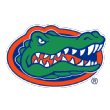
Favorite tight end: Kyle Pitts, Florida. Of course. This was a year for fun experimentation at the tight end position -- Ole Miss' Kenny Yeboah was dangerous as a deep threat and racked up heavy yards after catch, UCLA's Greg Dulcich was a wonderful vertical threat, and 24 tight ends averaged at least 40 receiving yards per game. Pitts was their leader. He caught 43 balls for 770 yards and 12 TDs in only eight games. Also: zero drops. Goodness.

Favorite offensive line technician: Alex Mollette, Marshall. The Thundering Herd center was the only player with over 300 block attempts and, per Sports Info Solutions, no blown blocks or penalties. He was perfect.

Favorite no-worries tackle: Brady Christensen, BYU. According to Pro Football Focus, the Cougars' left tackle graded out even better than Oregon's Penei Sewell did in 2019. That's clearing the highest possible bar.
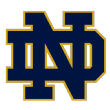
Favorite very talented and very, very large man: Aaron Banks, Notre Dame. The Fighting Irish guard (6-foot-5, 330 pounds) might have been the best offensive lineman in college football, period, but he's also the best of the "330 pounds and over" set. (Runner-up: Alabama's 6-foot-7, 360-pound Evan Neal.)
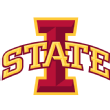
Favorite pass-rushing menace: Will McDonald, Iowa State. We were blessed with any number of ace pass-rushers this year, from Oklahoma's Ronnie Perkins to Duke's Chris Rumph II to, well, basically every defensive end on the Ohio State roster. But McDonald erupted in 2020
We have a larger arsenal of pass-rushing stats than we used to, and McDonald was elite in basically every one of them. He generated pressure on 16.7% of his pass-rush attempts (one in six), sacked the quarterback 5.8% of the time and finished with 10.5 sacks, 12 sacks created (which means he chased the QB into someone else's arms a couple of times, too), 10 incompletions caused and six penalties drawn.

Favorite sure-tackling bowling ball: Jaxon Player, Tulsa. The Golden Hurricane defense was blessed with one of the three or four best defenders in college football in linebacker Zaven Collins, but in the 6-foot, 290-pound Player, Collins had one hell of a havoc-wreaker up front. He was the only lineman in FBS to combine 10 or more run stops at or behind the line (designed runs only) with only one broken tackle allowed. He was first on the team in pass pressures and forced 12 incompletions and interceptions, too. He is an immovable dynamo, and if he gets his hands on you, the play is over.

Favorite everywhere linebacker: Darius Muasau, Hawaii. Check out this combination: Muasau led the Rainbow Warriors in tackles, tackles for loss, sacks and pass pressures ... and also allowed only 68 yards on 14 passes as the primary coverage man. Against Houston in the New Mexico Bowl, he had a sack, an interception and three QB hurries. He was a Swiss Army knife for a defense that really needed one.

Favorite everywhere safety: Talanoa Hufanga, USC. Of all the "he was on pace for ..." tidbits this odd season created, try this one on for size: Projected over 14 games (the normal number of games for a team that played in its conference title game), Hufanga was on pace for 14 tackles for loss, seven sacks ... and nine interceptions. It's as if there were two of him on every snap -- one playing defensive end and one playing deep safety.

Favorite ultra-sticky coverage man: Ahmad "Sauce" Gardner, Cincinnati. The sophomore from Detroit lined up in press coverage constantly, picked off three passes and, as the primary coverage defender, allowed 13-for-35 passing for one touchdown and a raw QBR of just 11.3. A back injury kept him out of the Peach Bowl, and that's a shame -- Sauce vs. Georgia's George Pickens might have been the best matchup of bowl season.
Favorite game: LSU 53, Ole Miss 48
By my count, there were 20 games this season in which both teams gained at least 500 yards. It isn't the least common thing in the world -- hell, Ole Miss played in four of them by itself. The Rebels even managed to suck South Carolina (98th in scoring offense, 96th in yards per game) into such a battle, which was a ... unique accomplishment. But maybe no game this season tickled me the way the Dec. 19 track meet in Baton Rouge did.
Ed Orgeron's defending national champions went just 5-5, losing to both Mississippi State and Missouri and getting their doors blown off by both Auburn and Alabama. After pulling a stunning and unlikely upset of Florida on Dec. 12, the Tigers had every reason to check out mentally. Ole Miss, meanwhile, had won the Egg Bowl three weeks prior and hadn't played since. The temperature was in the mid-50s, and it rained about an inch during the game. And in these conditions and circumstances, the Rebels and Tigers put on a show.
LSU raced to a 17-7 lead, but Jerrion Ealy's 100-yard kickoff return brought Ole Miss back to within three. Two Kayshon Boutte touchdowns helped to increase LSU's advantage to 37-21, then Ole Miss went on a 27-3 run over the course of 15 minutes. Down eight, LSU drove 75 yards for a score but missed the 2-point conversion. The Tigers then forced only the Rebels' third punt of the night, and first since the first quarter, then took the lead with 1:34 left on Boutte's third touchdown (the freshman had 14 catches for 308 yards). Ole Miss quickly moved into Tigers territory, but Ali Gaye stripped the ball from Matt Corral, and JaCoby Stevens pounced on it for the win.
You know how opponents of playoff expansion always talk about how such expansion would diminish the importance of the regular season? There might not have been a less important power conference game this season, but these two rivals pulled off a banger all the same. When my Top 50 Games of 2020 list comes out in the days following the national championship, this won't be No. 1. But it was my favorite all the same.
Favorite touchdown: UMass' one score
An abbreviated season didn't prevent us from seeing plenty of glorious touchdowns in 2020 of the usual varieties -- one-handed catches, long explosions, etc. But as a soccer fan, I appreciate rarity, too. A soccer goal happens once every 30 minutes or so, which makes almost every goal you see feel like a mini-miracle.
It got no more miraculous or rare than UMass' lone touchdown of 2020.
Like fellow independents UConn and New Mexico State, UMass initially canceled its 2020 fall season, but when some conferences backed off and put together fall seasons, the Minutemen evidently felt they needed to jump into the pool as well. They cobbled together a schedule of four road games over seven weeks. Against Georgia Southern, Marshall, Florida Atlantic and Liberty, they got outscored by a combined 161-12 and finished the year ranked 127th in offensive success rate, 125th in defensive success rate and 127th in overall SP+.
They got a little bit of buy-game money out of the deal, and their players got plenty of fresh air and exercise. So there's that. But they did also get a single touchdown. Trailing Marshall 7-0 in the first quarter, they took over at their 20 and moved 80 yards in six plays. They were helped immensely by two Marshall penalties (a 15-yard face mask and a 12-yard pass interference), but they also pulled off some trickery in a 37-yard pass from Will Koch to Taylor Edwards.
How'd we get there? A little 𝘵𝘳𝘪𝘤𝘬𝘦𝘳𝘢𝘵𝘪𝘰𝘯 from Koch to Edwards for 37 to get us into the red zone#Flagship🚩 pic.twitter.com/XRGIRoOE5l
— UMass Football (@UMassFootball) November 7, 2020
On first-and-goal from the 2, Koch found Samuel Emilus for a score, and UMass tied the score. (Marshall took the lead for good five minutes later. No need to get into the final score.)
I always say that simply fielding a team and executing a season is hard enough that everyone deserves moments of happiness. I'm usually referring to winning games when I say that, and UMass came nowhere close to that. But they at least had Koch-to-Emilus.
Favorite playcaller: Steve Sarkisian
Let's get the obvious disclaimer out of the way up top: Yes, it should be easy to call plays when you have Alabama's talent. A decent playcaller is going to produce strong yardage and point totals as Alabama's offensive coordinator. Of course.
Alabama's 2020 offense was far beyond "strong," however. The Crimson Tide have been damn near perfect. What's better than executing RPOs with Najee Harris as the "R" and DeVonta Smith as the "P"? Adding in fakes to make it look as if Metchie is blocking for Smith before he explodes upfield instead. What's better than dumping a flare pass to Harris in open space? Having him run an angle route into even more open space. Sure, it helped that Sarkisian had an elite running back, two elite receivers, a 1,600-pound brick wall for an offensive line and, in Jones, a confident, accurate quarterback running the show. But he added creativity and unpredictability to an already nearly optimized offense. It produced magic, and it earned him the Texas head coaching job.
Alabama's current offensive SP+ rating, with one game to go, is 50.3 adjusted points per game, which rates in the 99.8th percentile for 2020. Only two offenses this century have hit the 99.9 range: 2018 Oklahoma and 2004 Louisville. Bama head coach Nick Saban has already overseen SP+'s three best defenses of the century (2017, 2016, 2011), and thanks to Sarkisian, he has now had one of the best offenses as well.
Sarkisian was a part of a top-10 offense in the 1990s (BYU ranked sixth in 1996 when he was the starting QB), a top-5 offense in the 2000s (USC was fifth in 2008 when he was coordinator), a top-2 offense in the 2010s (2019 Bama was No. 2) and now the top offense in the 2020s. That's one hell of an offensive legacy.
Favorite storyline for 2021: Change
Continuity can be a very good thing. We finished the 2019 season craving the Trevor Lawrence vs. Justin Fields rematch we ended up actually getting to see, and we had plenty of veteran QBs in or near the preseason top 10: Clemson's Lawrence, Ohio State's Fields, Florida's Kyle Trask, Notre Dame's Ian Book, Texas' Sam Ehlinger, Texas A&M's Kellen Mond, etc. Bama's Mac Jones had started a few games as well.
We obviously don't yet know who will and won't return -- anybody who wants to use an extra year of eligibility will have one waiting for them -- but it's noteworthy that of the top seven teams in the final CFP rankings, only one didn't have a QB who was either a senior (Trask, Book, Mond) or a potential first-round pick in 2021 (Lawrence, Fields, Jones).
Oklahoma's Spencer Rattler is scheduled to return, and he'll probably lead the Way-Too-Early 2021 Heisman Odds lists we'll see in the coming days and weeks. North Carolina's Sam Howell and Iowa State's Brock Purdy probably won't be far behind. But most of this season's top teams will be breaking in new starting signal-callers. Sure, Alabama, Clemson and Ohio State are all likely to start blue-chippers with high ceilings and huge arms, but all three will experience quite a bit of turnover in their respective skill corps as well. In this era of extreme non-parity, that offers us at least a small chance at a shakeup at the top, even if we start out with the same teams as usual.
